Category: Benchmark, Range and Median
In transfer pricing arm’s length prices are often determined based on benchmark studies. These studies produces a range of figures. In some cases, not all comparable transactions will have a relatively equal degree of comparability. Where every effort has been made to exclude points that have a lesser degree of comparability, it may still be the case, that what is arrived at is a range of figures for which comparability defects remain that cannot be identified and/or quantified.
Substantial deviation among points in that range may indicate that the data used in establishing some of the points may not be as reliable as the data used to establish the other points in the range
In such cases, if the range includes a sizeable number of observations, statistical tools (e.g. the interquartile range or other percentiles) can enhance the reliability of the analysis.
It may also be appropriate to use measures of central tendency (for instance the median, the mean or weighted averages) to determine the arm’s length price applied, in order to minimise the effect of unknown or unquantifiable remaining comparability defects.
See on this issue, TPG 2017, para 3.55 – 3.62

IRS – APA Study Guide issued in early 2000s
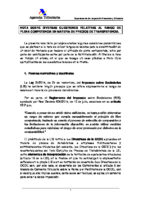
Spain releases note on arm’s length range and benchmarking.

German TP-Legislation updated as of June 2021

Italy releases operational instructions on arm’s length range and benchmarking.

Hungary – Legislation on use of Interquartile Range and Median
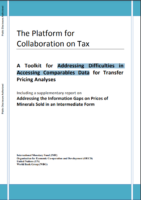
Accessing Comparables Data – A Toolkit on Comparability and Mineral pricing
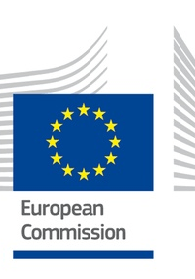
Report on the Use of Comparables in the EU (2017)

EU REPORT ON THE USE OF COMPARABLES IN THE EU (2016)

Czech Republic vs. Eli Lilly ČR, s.r.o., August 2023, Supreme Administrative Court, No. 6 Afs 125/2022 – 65
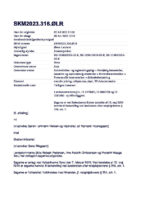
Denmark vs “Soy A/S”, June 2023, Eastern High Court, SKM2023.316.ØLR
Panama vs Banana S.A., June 2023, Administrative Tribunal, Case No TAT-RF-048

Portugal vs R… Cash & C…, S.A., June 2023, Tribunal Central Administrativo Sul, Case 2579/16.6 BELRS
Hungary vs “Electronic components Manufacturing KtF”, June 2023, Supreme Court, Case No Kfv.V.35.415/2022/7
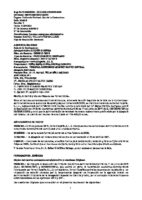
Spain vs Ferroli España, S.L.U., May 2023, Audiencia Nacional, Case No 3400/2023 – ECLI:EN:AN:2023:3400

India vs Auronext Pharma Private Limited, May 2023, Income Tax Appellate Tribunal, ITA-TP No. 486/Hyd/2022

France vs SAS Weg France, May 2023, CAA, Case N° 21LY03690

Czech Republic vs ESAB CZ, s. r. o., May 2023, Regional Court , Case No 31 Af 21/2022 – 99
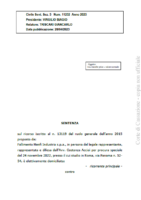
Italy vs Menfi Industria s.p.a., December 2022, Supreme Court, Cases No 11252/2023

Malaysia vs Sandakan Edible Oils SDN BHD, April 2023, High Court, Case No WA-14-2-02/2021
Ukrain vs “LK Ukraine Group”,March 2023, Supreme Court, Case No. 1340/3525/18 (proceedings No. K/9901/11787/19)
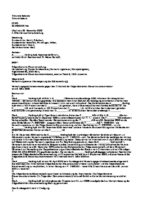
Spain vs “SGGE W T Spanish branch”, January 2023, TEAC, Case No Rec. 00/07503/2020/00/00

Kazakhstan vs “KOR Oil Company”, January 2023, Supreme Court, No. 6001-22-00-6ап/1563
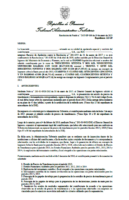
Panama vs “Tech Distributor S.A.”, January 2023, Administrative Tax Tribunal, Case No TAT-RF-006 Expediente: 115-19
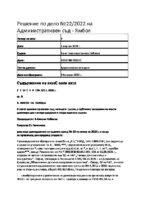
Bulgaria vs Yazaki Bulgaria Ltd, January 2023, Administrative Court, Case No 22/2022

Czech Republic vs ARGO-HYTOS s.r.o., January 2023, Supreme Administrative Court, No. 2 Afs 66/2021 – 57
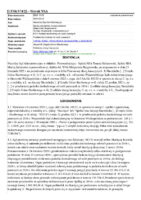
Poland vs C. spółka z o.o. , November 2022, Supreme Administrative Court, Case No II FSK 974/22

Greece vs “Pharma Distributor Ltd.”, November 2022, Tax Court, Case No ΔΕΔ 3712/2022

Hungary vs “Gas-Trader KtF”, November 2022, Supreme Administrative Court, Case no Kfv.I.35.343/2022/8
Romania vs “A. S.R.L.”, October 2022, High Court, Case No 4859/2022

India vs Amway India Enterprises Pvt. Ltd., September 2022, High Court of Delhi, Case No ITA 313/2022
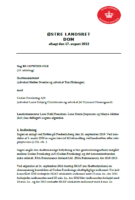
Denmark vs. Codan Forsikring A/S, August 2022, Eastern High Court, Case no BS-11370/2020

India vs Sulzer Tech India Pvt Ltd, July 2022, Income Tax Appellate Tribunal, Case No ITAT No 633-MUM-2021

Ukrain vs PrJSC “Poltava GZK”, June 2022, Supreme Court, Case No 440/1053/19
Poland vs C. spółka z o.o. , June 2022, Administrative Court, Case No I SA/Go 103/22
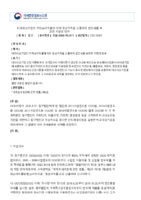
Korea vs “Semicon-sales”, June 2022, Tax Court, Case No 2020-서-2311

Netherlands vs “Fertilizer BV”, April 2022, Court of Appeal, Case No. ECLI:NL:GHSHE:2022:1198
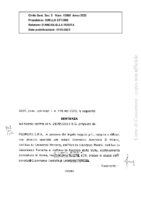
Italy vs Promgas s.p.a., May 2022, Supreme Court, Cases No 15668/2022

Chile vs Avery Dennison Chile S.A., May 2022, Court of Appeal, Case N° Rol: 99-2021

Bulgaria vs Rubbertek Bulgaria EOOD, April 2022, Supreme Administrative Court, Case No 3453
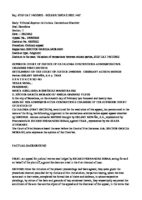
Spain vs Delsey España S.A, February 2022, Tribunal Superior de Justicia, Case No 483/2022 (Roj: STSJ CAT 1467/2022 – ECLI:ES:TSJCAT:2022:1467)
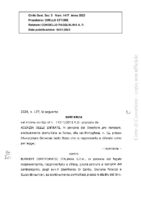
Italy vs Burckert Contromatic Italiana S.p.A., November 2021, Corte di Cassazione, Sez. 5 Num. 1417 Anno 2022

Panama vs “Construction S.A.”, December 2021, Administrative Tax Court, Case No TAT- RF-111 (112/2019)
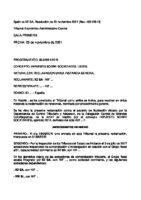
Spain vs “Benchmark SA”, November 2021, TEAC, Case No Rec. 4881/2019
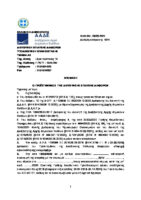
Greece vs “Diary Distributor Ltd.”, November 2021, Tax Court, Case No 579/2021

Spain vs Varian Medical Systems Iberica S.L., October 2021, Audiencia Nacional, Case No SAN 4241/2021 – ECLI:ES:AN:2021:4241

Greece vs Cypriot company Ltd., September 2021, Tax Court, Case No 2940

France vs (SAS) SKF Holding France, October 2021, Conseil d’Etat, Case No. 443133

Colombia vs Carbones El Tesoro S.A., September 2021, Administrative Court, Case No. 22352

Finland vs A Oy, September 2021, Supreme Administrative Court, Case No. KHO:2021:127

Austria vs. “Yogo Food-Distributor”, August 2021, Bundesfinanzgericht, Case No RV/3100163/2018
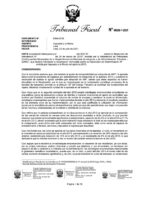
Peru vs “TP-Packaging”, July 2021, Tax Court, Case No RTF 06526-1-2021

Colombia vs SONY Music Entertainment Colombia S.A., July 2021, The Administrative Court, Case No. 20641
Luxembourg vs “Lux PPL SARL”, July 2021, Administrative Tribunal, Case No 43264

Panama vs “Pharma Distributor S.A.”, July 2021, Administrative Tax Court, Case No TAT-RF-066

Hungary vs “Stream-Heat”, May 2021, Court of Appeals – Curia, Case No. Kfv.I. 35.174/2021/7

Finland vs A Oy, June 2021, Supreme Administrative Court, Case No. KHO:2021:73

Greece vs X Ltd., May 2021, Court, Case No 1674

Spain vs XZ SA, May 2021, TEAC, Case No Rec. 2545/2019

Denmark vs Tetra Pak Processing Systems A/S, April 2021, Supreme Court, Case No BS-19502/2020-HJR
Chile vs Avery Dennison Chile S.A., March 2021, Tax Court, Case N° RUT°96.721.090-0
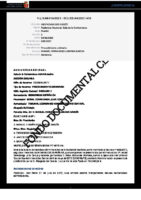
Spain vs BIOMERIEUX ESPAÑA SA, February 2021, National Court, Case No 2021:416
South Africa vs ABC (PTY) LTD, January 2021, Tax Court of Johannesburg, Case No IT 14305

Portugal vs “A-Contract Manufacturer LDA”, December 2020, CAAD Tax Arbitration, Case No 808/2019-T

El Salvador vs “E-S. Sales Corp”, December 2020, Tax Court, Case No R1705038.TM

Romania vs “GAS distributor” SC A, December 2020, Court of Appeal, Case No 238/12.03.2020
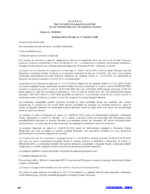
Romania vs “Electrolux” A. SA, November 2020, Supreme Court, Case No 6059/2020
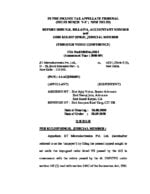
India vs ST Microelectronics Pvt. Ltd., September 2020, Income Tax Tribunal, ITA No.6169/Del./2012
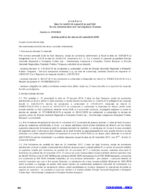
Romania vs “Milk and Dairy” A. SA, September 2020, Supreme Court, Case No 4702/2020
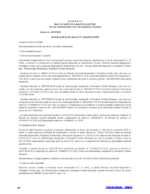
Romania vs “Machinery rental” S.C. A. SRL, September 2020, Supreme Court, Case No 4453/2020
Panama vs “Petroleum Wholesale Corp”, September 2020, Administrative Tribunal, Case No TAT-RF-062
Poland vs Cans Corp Sp z.o.o., August 2020, Administrative Court, I SA/Sz 115/20
Greece vs “G Pharma Ltd”, july 2020, Court, Case No 1582
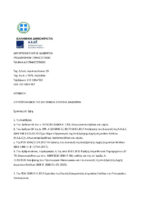
Greece vs “Agri Ltd”, july 2020, Court, Case No A 1514

Denmark vs Icemachine Manufacturer A/S, June 2020, National Court, Case No SKM2020.224.VLR

Hungary vs “Auto Parts Ktf”, May 2020, Supreme Court (Kúria), Case No. Kfv.I. 35,618 / 2019/11
Denmark vs Pharma Distributor A A/S, March 2020, National Court, Case No SKM2020.105.OLR

Netherlands vs Hunkemöller B.V., January 2020, AG opinion – before the Supreme Court, Case No ECLI:NL:PHR:2020:102

Nigeria vs Prime Plastichem Nigeria Limited, February 2020, Tax Appeal Tribunal, Case No TAT/LZ/CIT/015/2017

Czech Republic vs. ACTRAD s.r.o., February 2020, Supreme Administrative Court, No. 7 Afs 176/2019 – 26

India vs Gulbrandsen Chemicals Ltd., February 2020, High Court, Case No 751 of 2019

Panama vs “AC S.A.”, January 2020, Administrative Tribunal, Case No TAT-RF-002
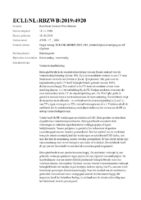
Netherlands vs “Fertilizer BV”, November 2019, District Court, Case No. ECLI:NL:RBZWB:2019:4920

Czech Republic vs. Eli Lilly ČR, s.r.o., December 2019, District Court of Praque, No. 6 Afs 90/2016 – 62

Hungary vs “APA Ktf”, October 2019, Court of Appeals, Case No. Kfv.I.35.504/2018/6

Portugal vs A S.A., October 2019, Tribunal Arbitral Coletivo, Case No 511/2018-T
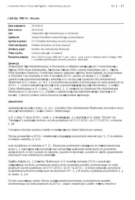
Poland vs “Cans Corp”, September 2019, Provincial Administrative Court i Szczecin, Case no SA/Sz155/19
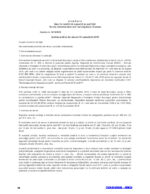
Romania vs “Broker” A SRL, September 2016, Supreme Court, Case No 3818/2019
Sweden vs Absolut Company AB, June 2019, Supreme Administrative Court, Case no 1913-18

Hungary vs “Auto Parts Ktf”, May 2019, Administrative Court, Case No. 1.K.27.084 / 2019
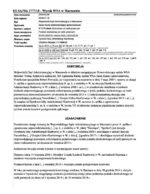
Poland vs “Shopping Centre Developer sp.k.”, May 2019, Administrative Court, Case No III SA/Wa 1777/18
Zambia vs Nestlé Trading Ltd, March 2019, Tax Appeals Tribunal, Case No 2018/TAT/03/DT
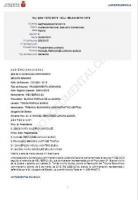
Spain vs Ikea, March 2019, Audiencia Nacional, Case No SAN 1072/2019
Chile vs Monsanto Chile S.A, December 2018, Tax Court, Case N° RUC N° 14-9-0000002-3
France vs GE Medical Systems, November 2018, Supreme Court – Conseil d’État n° 410779
Italy vs BI S.r.l, November 2018, Tax Tribunal of Milano, Case no. 5445/3/2018
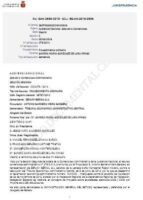
Spain vs. Zeraim Iberica SA, June 2018, Audiencia Nacional, Case No. ES:AN:2018:2856
France vs GE Healthcare Clinical Systems, June 2018, CE n° 409645

Spain vs. Microsoft Ibérica S.R.L, February 2018, Audiencia Nacional, Case no 337/2014

Sweden vs. Absolut Company AB, Jan 2018, Administrative Court, No. 1610-16
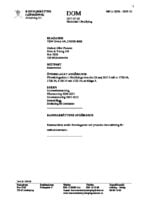
Sweden vs VSM Group AB, July 2017, Administrative Court of Appeal, Case No 2038–2041-15

Peru vs “Holding S.A.”, June 2017, Tax Court, Case No 1308-2009

Indonesia vs Cussons Indonesia, June 2017, Supreme Court, Nomor 907/B/PK/PJK/2017
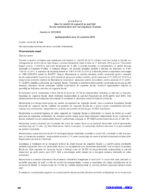
Romania vs SC A SRL, October 2016, Supreme Court, Case No 2651/2016
Portugal vs “Cork Portugal SA”, May 2016, Collective Arbitration Tribunal, Case No 609/2015-T

France vs GE Healthcare Clinical Systems, December 2015, CAA de VERSAILLES, Case No 13VE00965

Sweden vs Nordea Nordic Baltic AB, October 2015, Administrative Court of Appeal, Case No 4811-14, 4813–4817-14
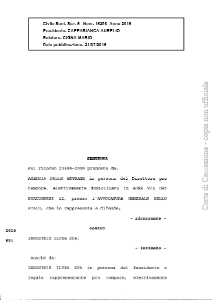
Italy vs. ILPEA SPA, July 2015, Supreme Court 15298

India vs. Adaptec (India) P. Ltd., March 2015, Income Tax Appellate Tribunal, ITA.No. 206/Hyd/2014

India vs. Quark Systems Pvt. Ltd. Oct 2014, ITA No.282

Indonesia vs Cussons Indonesia, July 2014, Tax Court, Put.53966/2014

Austria vs Wx-Distributor, July 2012, Unabhängiger Finanzsenat, Case No RV/2516-W/09
Argentina vs Boehringer Ingelheim S.A. , April 2012, Tribunal Fiscal de la Nación, Case No 26713
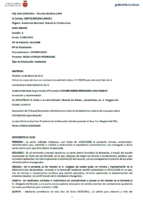
Spain vs EcoloJeans SL, May 2011, National Court, Case No SAN 2304/2011 – ECLI:ES:AN:2011:2304

Korea vs Photo Corp, September 2007, Korean Court, Case No 2006서1465

Korea vs Pharma Equipment Corp, September 2009, Corean Court, Case No 2008서1588

Czech Republic vs. Mr O.V., March 2009, Supreme Administrative Court, Case No 8 Afs 80/2007 – 105

UK vs. DSG Retail (Dixon case), Tax Tribunal, Case No. UKFT 31

Germany vs “Clothing Distribution Gmbh”, October 2001, BFH Urt. 17.10.2001, IR 103/00

